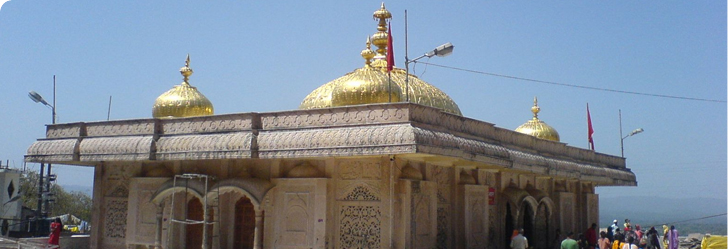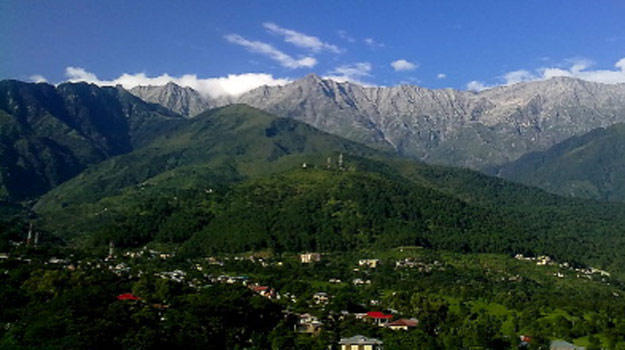ॐ श्री गुरुभ्यो नमः ॐ श्री शिवानन्दाय नमः ॐ श्री चिदानन्दाय नमःॐ श्री दुर्गायै नमः
Source of all Images in this Blog-post : Google Images : ‘Google Image Search’ will reveal the multiple sources of every single image shared here. For more details, kindly see ‘Disclaimer‘
Official Website of Shri Jwalamukhi Temple, Kangra , Himachal Pradesh

Jawalamukhi also known as Jawalaji is a Shakti Pitha town in Kangra district of Himachal Pradesh in India.
Hindu genealogy registers are kept here like that of Haridwar. The Hindi word ‘Jwalamukhi’ literally means ‘Volcano’ in English.
Jawalamukhi is a famous temple of the Divine Mother Goddess Jwalamukhi, the deity of flaming face.

Raja Bhumi Chand Katoch of Kangra, a great devotee of goddess Durga, dreamt of the sacred place and the Raja set people to find out the whereabouts of the site.

The site was traced and the Raja built a temple at that location.

The building is modern with a gilt dome and pinnacles, and possesses a beautiful folding door of silver plates.

Under the gaze of the Dhauladhar mountain range and set amidst the undulating hills that character sub-Himalayan Himachal Sati’s tongue is believed to have fallen at Jawalamukhi and the goddess is manifest as flawless blue flames that burn through the fissures in the age old rock in the temple.

The temple is located on a small spur on the Dharamsala-Shimla road at a distance of about 20 km from the Jawalamukhi Road Railway Station.
The Shakti Peetha in Kangra valley attracts hundreds of thousands of pilgrims every year. No idol is located in the temple and the deity is worshipped in the form of flames which come out from the crevices of the rock.
There is a small platform in front of the temple and a big Mandap where a huge brass bell presented by the King of Nepal is hung.

Usually milk and water are offered and the Ahutis or oblations are offered to the sacred flames in the pit, situated in the centre of the temple in between the pillars supporting the roof.
The deity is offered Bhog of Rabri or thickened milk, Misri or candy, seasonal fruits and milk.
There is a mystic Yantra or diagram of the goddess, which is covered with, shawls, ornaments and the sacred Mantras are recited.
The Puja has different phases and goes on practically the whole day. Aarti is performed five times in the day, Havan is performed once daily and portions of Durga Saptasati are recited.
For Aarti, the temple remains open from 11.00 A.M. to 12.00 P.M. and from 06.00 P.M. to 07.00 P.M.
The Mughal Emperor Akbar once tried to extinguish the flames by covering them with an iron disk and even channelizing water to them. But the flames blasted all these efforts.
Akbar then presented a golden parasol (Chhattar) at the shrine. However, his cynicism at the power of Devi caused the gold to debase into another metal – a fact which is still unknown to the world.
His belief in the deity was all the more strengthened after this incident. Thousands of pilgrims visit the shrine round the year to satisfy their spiritual urge.
Maharaja Ranjit Singh paid a visit to the temple in 1815 and the dome of the temple was gold-plated by him.
Just a few feet above the Jwalamukhi temple there is a six-feet deep pit with a circumference of about three-feet. At the bottom of this pit there is another small pit about one and a half feet deep with hot water bubbling all the time.
The temple is identified as one among the 51 Shakti Peethas of this sacred land of Bharatavarsha. It is also one of the most renowned temples of Divine Mother Goddess Durga.
Genealogy Registers
Hindu genealogy registers at Jawalamukhi are the Genealogy Registers of pilgrims maintained there by the Pandas of the temple.
The Jwalamukhi Shrine as a Shakti Peetha
The shrine is regarded as a Maha Shakti Peetham. It is believed that Sati Devi’s tongue fell here.
Shakti Peethas are the shrines of Devi, the primordial Mother Goddess. Each Shakti Peetha has a shrine for the Shakti and Bhairava. Siddhida (Ambika)is the Shakti and Unmatta Bhairava is the Kalabhairava.
The Daksha Yaga and Sati’s self immolation had immense significance in shaping the ancient Sanskrit literature and even had impact on the culture of India.
It led to the development of the concept of Shakti Peethas and there by strengthening Shaktism among the Hindus.
Enormous stories in the sacred Hindu Puranas took the Daksha Yaga as the reason for its origin. It is an important incident in Shaivism resulting in the emergence of Shree Parvati in the place of Sati Devi and making Shiva a Grihastashrami (house holder).
Jwala Ji is a Hindu Goddess. The physical manifestation of Jwala Ji is always a set of eternal flames, and the term Jwala means flame in Sanskrit language.
Jwalaji meaning flame or Jwala Mukhi (flame emitting mouth) is probably the most ancient temple discussed in this region besides Vaishno Devi.
It is mentioned in the Mahabharata and other scriptures. There is a natural cave where eternal flames continue to burn. Some say there are nine flames signifying the nine Durgas .
Several schools of Buddhism also share the symbolism of a seven-forked sacred flame.
The Legend
In ancient times when demons lorded over the Himalayan mountains and harassed the gods, Lord Vishnu led the gods to destroy the demons.
They focused their strengths and huge flames rose from the ground. From that fire, a young girl was born. She is regarded as Adishakti — the first Primordial ‘Shakti.’
Known as Sati, the girl grew up in the house of Prajapati Daksha and later became the consort of Lord Shiva.
When her father insulted Lord Shiva, she was unable to accept this and consequently killed herself.
When Lord Shiva heard of his loving wife’s death, his rage knew no bounds. And holding Sati’s body, he began stalking the three worlds.
The other gods trembled before his wrath and appealed to Lord Vishnu for help.
Lord Vishnu released his Sudarshana Chakra which struck Sati’s body and shattered it to pieces.
At the places where the pieces fell, the fifty-one sacred ‘Shaktipeethas’ came into being.
Sati’s tongue fell at Jawalaji which is 610 metres above sea level, and the goddess is manifest here as tiny flames that burn flawlessly with blue flames through the fissures in the age-old rock.
Centuries ago a cowherd found that one of his cows was always without milk. He followed the cow to find out the cause. He saw a girl coming out of the forest who drank the cow’s milk, and then disappeared in a flash of light.
The cowherd went to the king and told him the story. The king was aware of the legend recounting that Sati’s tongue had fallen in this area.
The king tried without success to find that sacred spot. A few years later, the cowherd went again to the king to report that he had seen a flame burning in the mountains.
The king found the spot and had the Darshana (vision) of the holy flame. He had a temple built there by Raja Bhumi Chand, and arranged for priests to engage in regular worship.
It is believed that the Pandavas came later and renovated the temple. The folk song titled ‘Panjan Panjan Pandavan Tera Bhawan Banaya’ bears testimony to this belief.
Jawalamukhi has been a pilgrim centre for many years. According to a legend, the Mughal Emperor Akbar came to this Jwala Mandir after the battle of Noorpur and Chamba.
Akbar once tried to extinguish the flames by covering them with an iron disk and even channeled water to them. But the flames overcame all these efforts.
Maharaja Ranjit Singh installed a golden parasol (Chhattra) in the temple, and Sher Singh – the son of King Ranjit Singh – decorated the temple gates with silver.
Thousands of pilgrims continue to visit the shrine all through the year.
Jwala Ji of Kangra Valley
There are several Jwala Ji temples in India.
The best-known Jwala Ji shrine is located in the town of Jawalamukhi, in the lower Himalayan area of the Kangra district, in the state of Himachal Pradesh in India.
The shrine is about 56 kilometres from the town of Dharamshala.
The temple style is typical of Jwala Ji shrines: four-cornered, with a small dome on the top and a square central pit of hollowed stone inside where the main flame burns continuously.
A fair is held in the environs of the temple annually in July or August, during the sacred Hindu Navratras.
The temple had an associated library of ancient Hindu texts, many of which were translated from Sanskrit into Persian at the orders of Firuz Shah Tughlaq when the Delhi Sultanate conquered the Kangra area.
According to legend, when Sati‘s body was divided into 51 pieces, her tongue fell in the area of Jawalamukhi and it continues to be represented by the flames or Jyotis.
Along with her tongue, the flames of Sati’s Yogic power also fell into the place. Some legends state that Sati’s clothes also fell here, and that when the clothes fell here they were on fire and the fire has never gone out since then.
Near this area, eternal flames continue to burn in a natural cave. Some say there are seven or nine flames signifying the Nava Durgas – the nine Durgas.
Besides Vaishno Devi, Jwalaji or Jwala Mukhi is probably the most ancient temple mentioned by the Mahabharata and other Hindu scriptures.
Maa JwalaMukhi is the family Goddess or Kuldevi of Lakhanpals, Thakurs, Gujrals, and Bhatias of the region.
